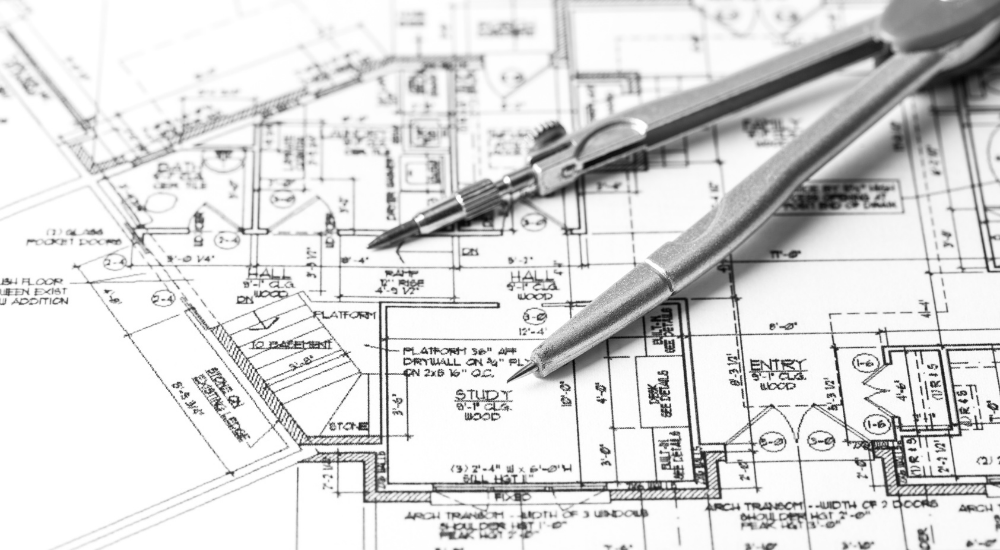Transforming Spaces: The Vision of CDA Architects for Modern Living
A Comprehensive Review of Building Designs and Their Impact on Modern City Preparation and Growth
Architectural designs have actually long served as a mirror to the societal worths and technological innovations of their time, playing a critical duty in forming contemporary city planning and growth. From the magnificence of Neoclassicism to the utilitarian method of Brutalism, each design has actually introduced distinct ideas that influence city appearances and capability.
Historic Summary of Architectural Designs
Throughout history, architectural styles have actually developed in feedback to cultural, technical, and ecological factors. Each period reflects the prevailing worths, ideas, and innovations of its time, resulting in a rich tapestry of style that signifies human imagination and adaptation. The old civilizations, such as the Egyptians and Greeks, developed foundational styles that highlighted balance and percentage, serving both functional and visual functions.
As cultures transitioned with the Center Ages, Gothic architecture emerged, defined by its verticality and detailed detailing, matching the spiritual ambitions of the period. The Renaissance noted a rebirth of classical suitables, combining art and style in innovative methods that affected succeeding designs throughout Europe.
The Industrial Revolution introduced new materials and building and construction methods, motivating activities like Innovation, which tested conventional types and accepted simpleness and capability. The 20th century saw a diversity of designs, with Postmodernism responding versus the stark minimalism of its predecessor, incorporating historical recommendations and diverse components.
Today, building designs proceed to evolve, driven by globalization and sustainability concerns, reflecting a dynamic interplay between heritage and technology. This historical summary emphasizes the value of architecture as a mirror of societal evolution and as a catalyst for urban advancement.
Secret Architectural Styles Explained
The variety of architectural styles shows the myriad influences that shape our constructed environment, each personifying unique attributes and social significances. Trick building designs consist of Timeless, Gothic, Baroque, Modernism, and Postmodernism, each representing distinct historical contexts and aesthetic ideologies.
Classical architecture, rooted in ancient Greece and Rome, emphasizes symmetry, percentage, and the usage of columns. On the other hand, Gothic architecture, flourishing in the center Ages, is characterized by pointed arches, ribbed safes, and flying buttresses, producing a spiritual top quality in basilicas. Baroque design, emerging in the 17th century, is noted by magnificence, intricate embellishment, and a dynamic interplay of light and darkness.

Recognizing these styles offers understanding right into the cultural narratives and technical improvements of their particular ages, highlighting exactly how design serves not equally as a shelter, but as a representation of societal worths and aspirations.
Influence On Urban Planning
In shaping the advancement of cities, building designs substantially influence city preparation decisions. The selection of architectural style usually determines the aesthetics, capability, and overall character of urban environments.
In addition, building designs can affect zoning policies and land make use of plans. Urban planners have to think about the prevailing building trends when making districts, guaranteeing that new developments balance with existing structures. This factor to consider fosters natural metropolitan landscapes and enhances community identification.
The implementation of details architectural styles can additionally influence socioeconomic factors within a city. Premium modern layouts may draw in wealthy residents and businesses, leading to gentrification, while extra budget-friendly real estate remedies might prioritize useful and lasting layouts to suit varied populaces. Ultimately, the interaction between building styles and city planning check this site out produces dynamic cities that show both historical context and contemporary demands, forming the lived experiences of their citizens.
Sustainability and Modern Style
Building styles play a critical role in addressing modern obstacles, especially in the world of sustainability. As city locations broaden and environmental problems intensify, modern-day design progressively embraces lasting style principles that focus on power effectiveness, source preservation, and minimal ecological influence.
Contemporary building movements, such as biophilic layout and eco-friendly architecture, supporter for structures that harmonize with their environments, making use of all-natural materials and advertising biodiversity - cda architects. These designs typically incorporate renewable resource resources, such as photovoltaic panels and wind turbines, to decrease reliance on nonrenewable fuel sources and reduced carbon impacts
Furthermore, the assimilation of sophisticated innovations, such as smart structure systems, improves power monitoring, enhancing resource usage while guaranteeing occupant convenience. Ingenious water management strategies, consisting of rain harvesting and greywater recycling, further add to lasting metropolitan atmospheres.
Notably, sustainability expands past ecological problems; it includes social and economic measurements. By fostering area wellness and promoting inclusivity, modern-day architectural designs align with lasting growth goals. The advancement of architectural practices continues to shape resistant cities that not just satisfy the requirements Related Site of the existing yet also protect the future for generations to come.
Area Engagement in Design
Neighborhood interaction in layout works as an essential bridge in between engineers and the populaces they serve, guaranteeing that the built setting reflects the requirements and desires of its individuals. This joint procedure welcomes community members to contribute their understandings and choices, click this site cultivating a feeling of possession and obligation toward the spaces they inhabit.
Effective community engagement uses numerous approaches, such as workshops, studies, and public online forums, to collect varied perspectives (cda architects). These approaches facilitate a two-way discussion, enabling designers to understand neighborhood contexts while equipping locals to voice their concerns and needs. This inclusivity not only enhances the design top quality yet likewise promotes social equity by addressing the one-of-a-kind obstacles dealt with by marginalized groups

Final Thought
Building styles have greatly influenced modern-day city preparation and advancement, reflecting developing cultural and technological contexts. The assimilation of historic looks with contemporary needs cultivates urban settings that prioritize sustainability and neighborhood involvement. As cities remain to grow and adapt, the ongoing dialogue in between building heritage and contemporary style principles will remain important in producing inclusive, dynamic spaces that boost lifestyle and advertise social equity. The future of metropolitan advancement rest on this harmonious equilibrium.